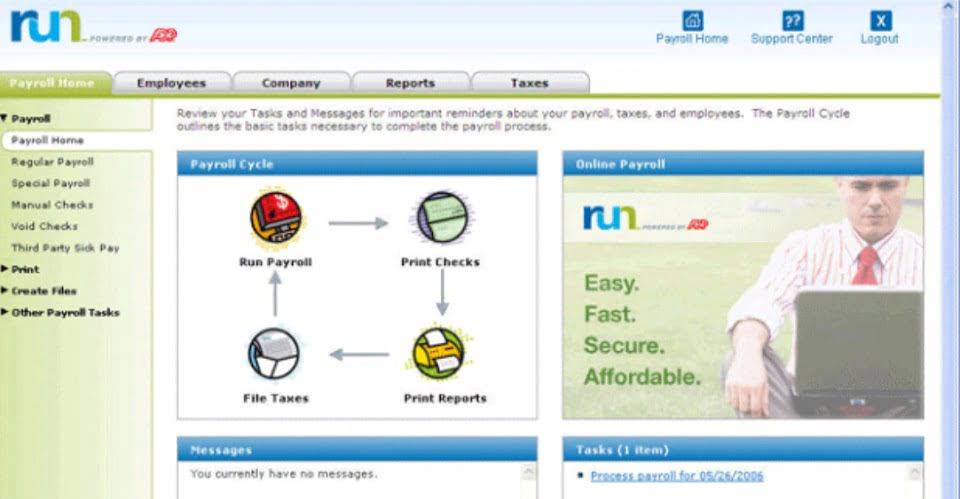
Using the accrual accounting method, you record income when you bill your customers, in the form of accounts receivable (even if they don’t pay you for a few months). Same goes for expenses, which you record when you’re billed in the form of accounts payable. Bookkeeping is the process of tracking income and expenses in your business. It lets you know how you’re doing with cash flow and how your business is doing overall.
Budget for major expenses and set financial goals
Set up a bookkeeping routine as soon as possible so that you can follow a consistent process every time. The banking section of this case study focuses on cash management, bank reconciliation, and bank feed connections. The software must have bank integrations to automatically feed bank or card transactions.

Bookkeeping Options for Small Business Owners
Bookkeepers track all costs and income to help a company make informed financial decisions. The accrual-based accounting method works better with double-entry bookkeeping, so it’s best for more complex business structures or businesses that keep inventory or sell goods. You record transactions as soon as they’re invoiced or billed, even if the money isn’t in your metaphorical pockets yet. If not done at the time of the transaction, the bookkeeper will create and send invoices for funds that need to be collected by the company. The bookkeeper enters relevant data such as date, price, quantity and sales tax (if applicable). When this is done in the accounting software, the invoice is created, and a journal entry is made, debiting the cash or accounts receivable account while crediting the sales account.
- By keeping your books organized and up-to-date, you can take control of your finances and make smart business decisions.
- As you balance Accounts Receivable against Accounts Payable, the result is your net income.
- The two primary methods of small business accounting are cash-based and accrual.
- There are many rules and regulations (not to mention exceptions to the rules) that you as a small business owner are supposed to know.
- You’ll need to record the money going out as well as the money coming in.
Create the General Ledger Accounts
Do you have more questions about the bookkeeping process for small businesses? Wondering how best to collect and track financial information, deal with expense management, and ensure healthy cash flow for your business? Here are some of the small business bookkeeping most frequently asked questions on bookkeeping for small businesses. Firms, freelancers and consultants who work with clients on projects or jobs should look for accounting software that helps them track their projects’ tasks and budgets.
Letting transactions pile up can lead to disorganized records, mistakes, and a whole lot of unnecessary stress. Keep a running balance of the debits and credits so you can determine if the account will balance when you have entered all the transactions. This investment can benefit your business in that an accounting professional will be up-to-date on tax laws and regulations and can sometimes find deductions that were overlooked. Depositing your salary into your personal account may help alleviate bookkeeping errors. Each province in Canada has a different threshold for when a business owner is required to pay taxes by quarterly instalments, instead of as a lump sum at the end of the year. But, just like a balanced diet keeps your body running smoothly, organized books keep your business healthy and prepared for the future.

Amazon selling tools
If you need more users, you need to move up to The Essentials plan for $55 per month. If you go this route, make sure to brush up on interview questions that’ll help you determine who’s the best fit. If you organize those categories into a table, you have a (title cased) Chart of Accounts. The first step is to familiarize yourself with some essential bookkeeping concepts. Below are some of the most common statements a bookkeeper uses to monitor activities.
Business accounting software and modern technology make it easier than ever to balance the books. A platform like FreshBooks, specifically designed for small business owners, can be transformational. Accountants rely on bookkeeping records to analyze and advise on the financial activity, health, and growth potential of a business. Bookkeeping is how businesses, entrepreneurs, and decision-makers monitor a company’s overall financial health and activity. Without basic bookkeeping practices, it’s easy for financial transactions and spending activities to get out of control, which can lead to confusion, disorganization, and loss of profit. As a QuickBooks ProAdvisor, Mark has extensive knowledge of QuickBooks products, allowing him to create valuable content that educates businesses on maximizing the benefits of the software.
Step 2: Categorize your business transactions
There are a wealth of ecommerce bookkeeping tools available to help you balance your books and stay on top of your finances, regardless of your experience. It is important to note that COGS are different from your operating expenses, which are expenditures not directly related to the production of your products. While they are both subtracted from your business’s total sales figures, they should be recorded separately. The last in, first out accounting method assumes the inventory acquired most recently was sold first. When calculating the cost of goods sold, the cost of the newest inventory is used to determine profitability.
Darren Fell, managing director of Crunch Accounting, discusses what costs can be claimed as a small business. When you first get started in business, looking after the financials can seem a bit intimidating. It’s also a good idea to ask how you can support them in pushing it over the line – whether that’s allowing them to pay a different way or splitting payments into smaller chunks. You can calculate COGS by adding the cost of your inventory to the purchases made during a specific time period. Subtract the cost of inventory left at the end of your timeframe to calculate your COGS.
